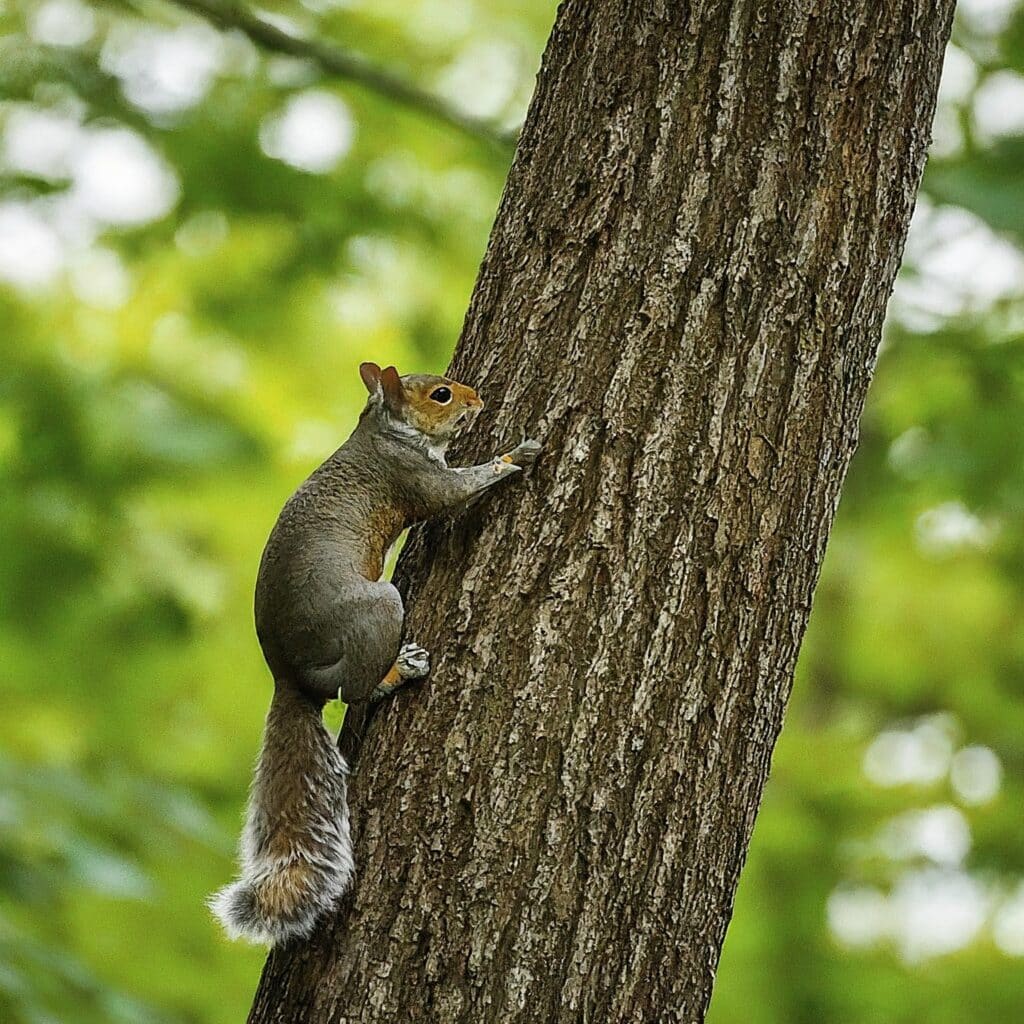In the United States, squirrels are abundant, with approximately 200 million individuals populating the country. While they can be found throughout the US, they are most active in wooded areas, parks, and suburban neighborhoods with ample trees. Texas, once known to be home to as many as 6.89 squirrels per acre in the early 90’s has seen a decline over the years with a steep drop off in the 2021 freeze that rocked our state. It is now estimated that squirrel density is at 1.68 per acre according to Texas Parks and Wildlife however, squirrels are resilient and the population has shown sides of rebounding since the freeze.
In the words of Dr. Malcolm from Jurassic Park, “Life, finds a way.”
Squirrels, primarily active during the day, have a varied diet, including nuts, seeds, fruits, insects, and even the occasional bird egg. They are curious and willing to try new things as they find them. Squirrels also have excellent spatial memory, a critical skill that allows them to locate buried food months later, enabling them to bury and hide food in times of plenty and then return to the food stores when other food sources are not readily available. This storing ability and their tendency to be a little obsessive about collecting food can occasionally result in finding a large collection of nuts in a random location, like the wall of your home!

Squirrels and the Ecosystem
Squirrel nests are called dreys, and are often built high in trees using twigs, leaves, and other materials. Most obvious in the winter when the leaves have fallen, you can see clustered leaves twigs in a ball near the top of the trees. Given their love of climbing, Squirrels prefer high spaces like this as a way to avoid predators and when the cold winters (or hot Texas summers) come, they may become vulnerable to these temperature extremes in these high trees and seek better shelter.
Squirrels have strong teeth and sharp claws which allow them to chew on various objects and also claw through common building materials, making your home a great place to beat the heat and store some food for when they need it. Squirrels are also known to chew through things like bird feeders, outdoor furniture, or even electrical wires and are capable of causing lots of damage in a short amount of time. However, squirrels are also fun loving and social with most having playmates and enjoying their days exploring their environment and climbing and leaping about their neighborhood.
Squirrels play a crucial role by dispersing seeds. They often bury nuts and seeds for later consumption but may forget where some of them are buried. These forgotten caches can sprout into new plants, contributing to forest regeneration in nature or just adding diversity throughout the city.
Squirrel Breeding Habits
Squirrels typically breed twice a year, once in late winter or early spring and again in mid-summer. During these times, you may notice increased squirrel activity as they search for mates and establish territories. Squirrels average 4 babies per litter, but can have as many as 9!

Making Your Property Less Inviting for Squirrels
These mischievous climbers are so much fun to watch, but when it is too much, it may be time to make your property a little less inviting by:
- Trim Tree Branches Trim tree branches that hang over your roof or near your home to prevent squirrels from accessing your attic or roof space.
- Secure Garbage Bins Squirrels are attracted to food sources, so ensure your garbage bins are tightly sealed.
- Use Squirrel-Proof Bird Feeders Invest in bird feeders designed to deter squirrels, such as those with weight-sensitive perches. While no bird feeder is squirrel proof, these tend to serve the purpose best.
Squirrels bring a sense of liveliness and charm to outdoor spaces, but managing their presence can sometimes be necessary to protect property and prevent damage. By understanding their habits and implementing preventive measures, you can coexist harmoniously with these agile acrobats of the treetops while enjoying your home sanctuary. If protecting your property from these playful critters seems too much, reach out to Prickly Pear to help you get the squirrel situation under control and protect your home from future squirrel invaders.
